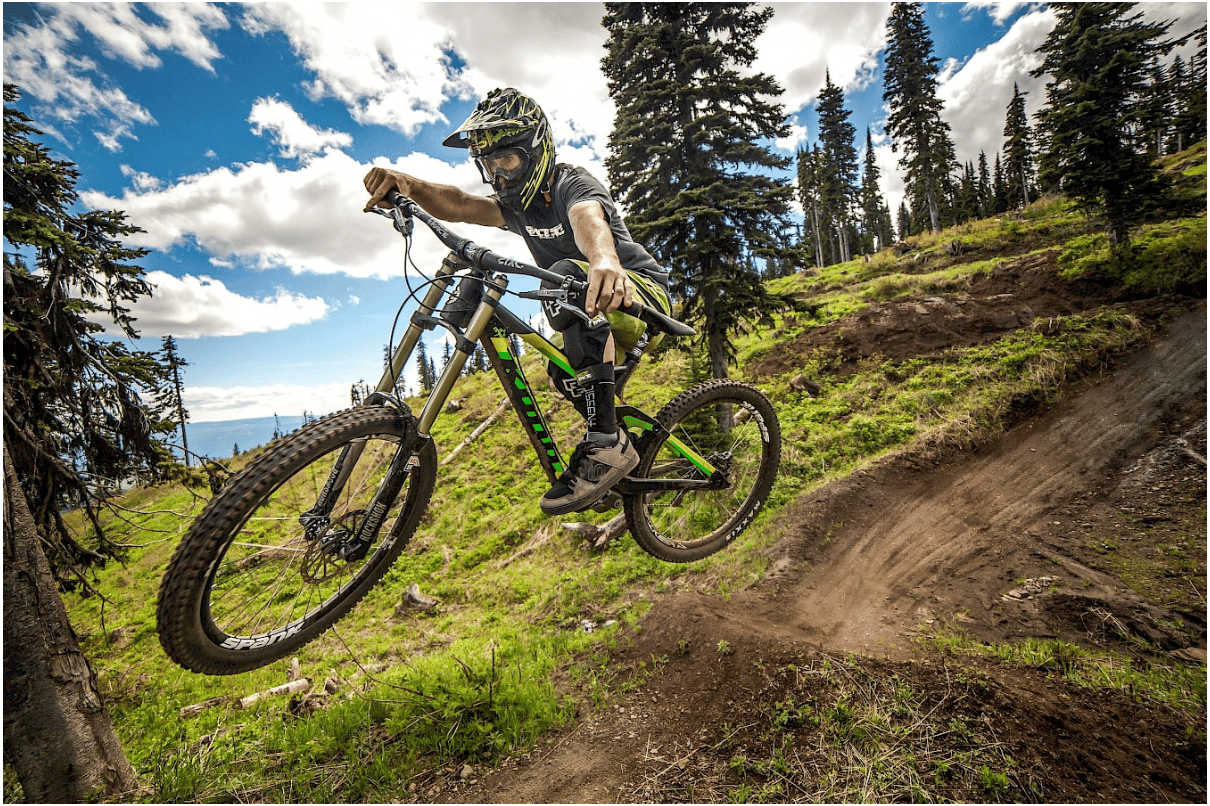If you’re someone who has just started getting into mountain biking then you may not understand how important it is to have the right type of tyres for your riding discipline. Mountain bike tyres vary a lot from tyre to tyre from their size, materials, durability and the knobs on the tyres. If you choose the right tyre for your riding style it can greatly improve your comfortability, give you more traction on trails and just make your rides more safe in general.
Types of Tyres
Tyres for mountain bikes can be broken up into four different types of mountain biking styles:
Cross-country (XC)
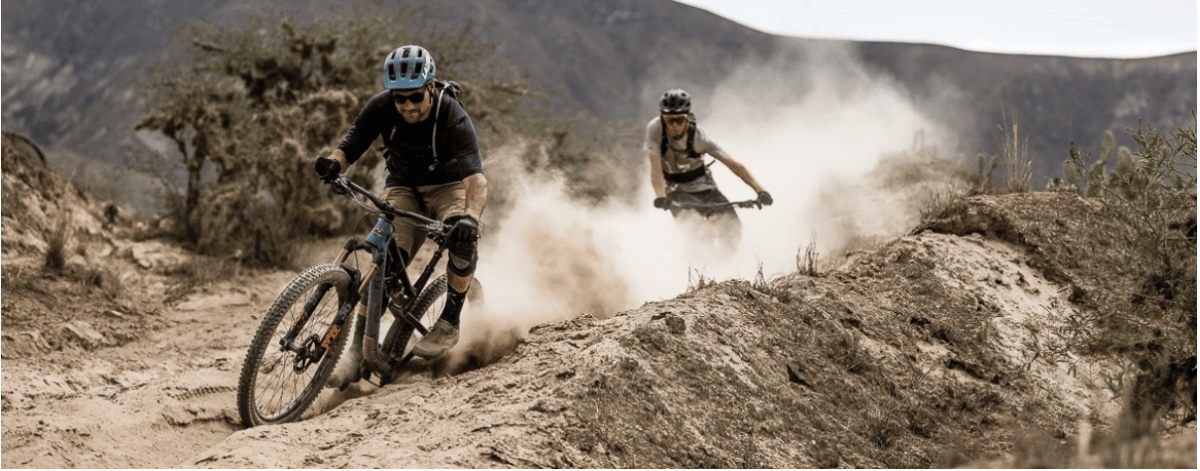
Cross country mountain biking tyres are for riders who are looking at speed as well as climbing and even for people who are thinking about racing. These types of tyres are thinner and lighter than other options to allow you to roll as fast as possible so that it’s easier to climb up those steep hills but still be able to hold pretty good speed down. These tyres also tend to have fewer or smaller knobs to gain less friction while riding so that you keep as much speed as possible.
In order to keep the tyres so light the cross country tyres have to sacrifice a bit of their protection and have fewer layers of puncture or cut protection compared to some of the other options.
Enduro
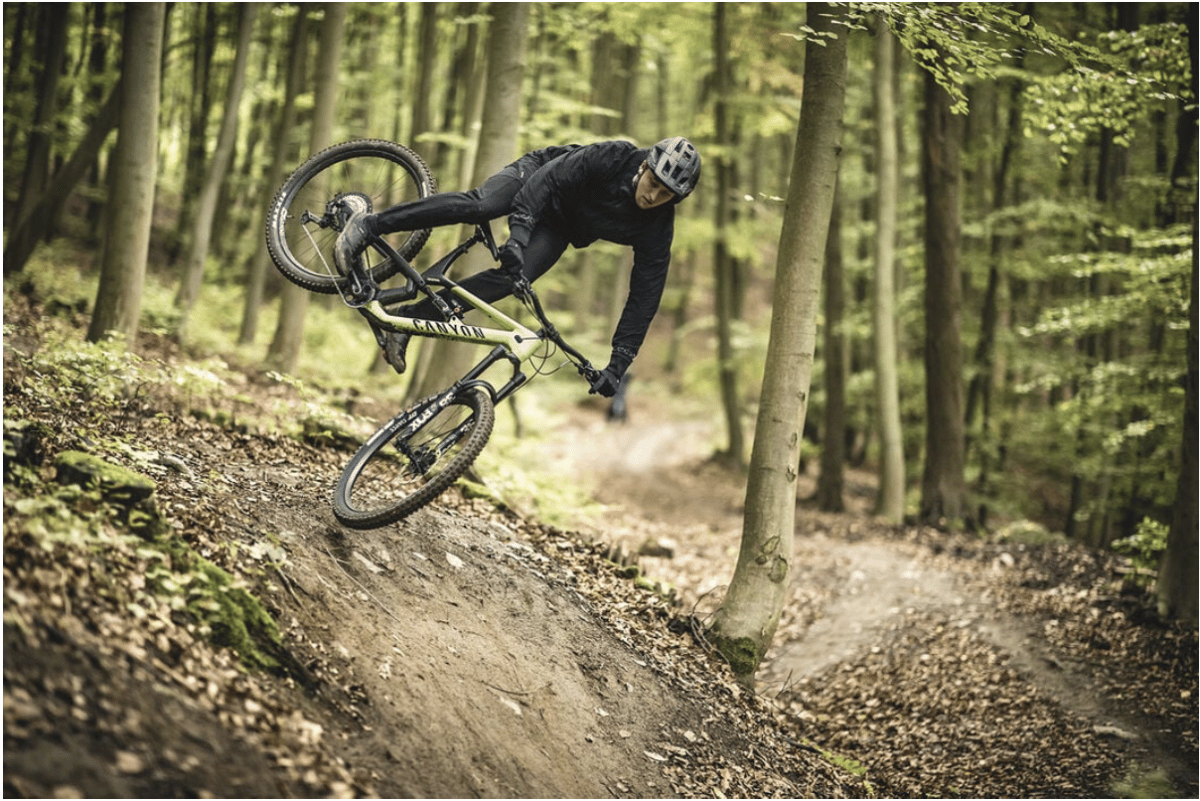
Moving up in travel from the cross country bikes we get enduro biking which is what most people that get into biking do. Apart from the travel getting bigger the tyres also get bigger, tougher and more aggressive.
The knobs on the tyres for this discipline are much larger than the cross country tyres and they even get supporting trusses to help the wheels hold up at high speeds and the more aggressive cornering you’ll be doing. The size of the tyres themselves also get bigger to give you more traction and because there are more protective layers inside them as well, some tyres even have dual rubber compounds in order to have more grip on the sides of your wheels.
Downhill
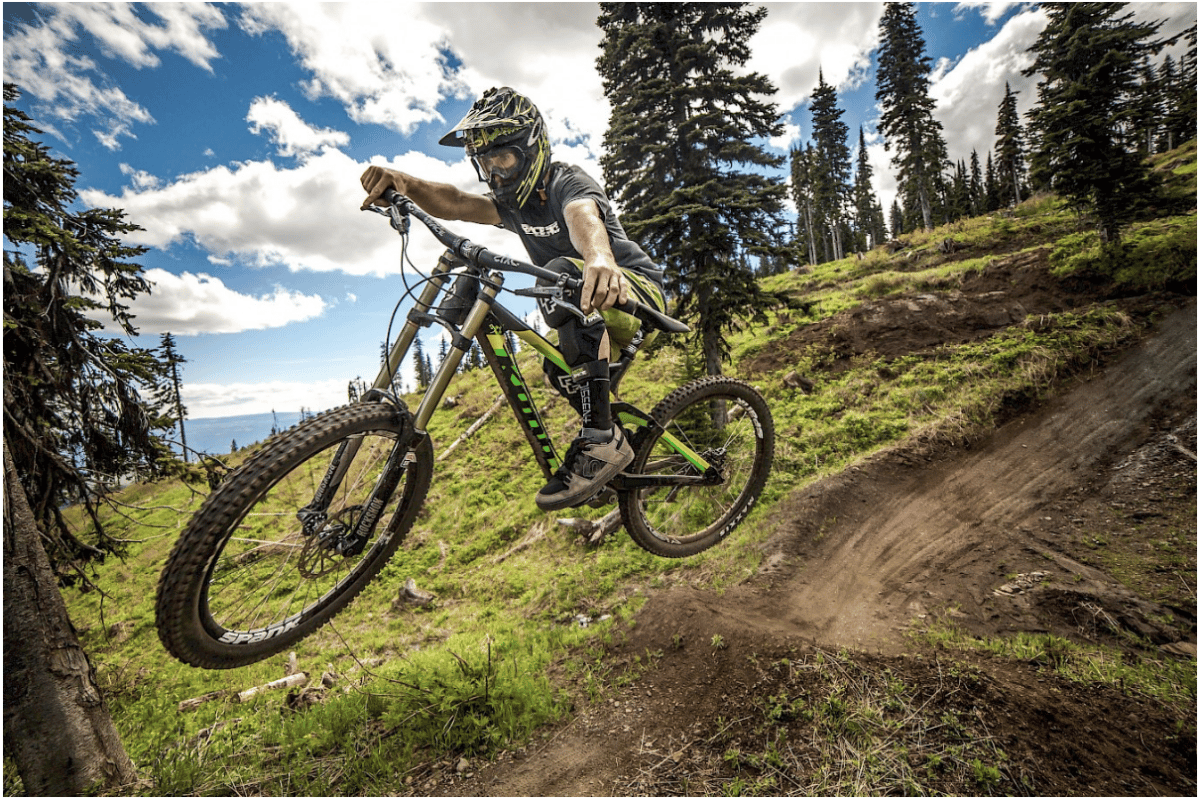
If you have ever laid your eyes on a downhill bike then you will know that they’re huge, have massive suspension and are just super aggressive-looking compared to other bikes. The tyres you get on these bikes are no different and are bigger and more aggressive in every way from the size of them to the protection they offer to withstand the toughest of terrains.
Plus/Fat Bikes
Although these bikes are not as popular as other mountain biking styles Fat bikes are seen a lot ridden on the snow or even sand because they have a massive tyre design which allows them to easily float over soft surfaces, which you can’t do with other types of bikes.
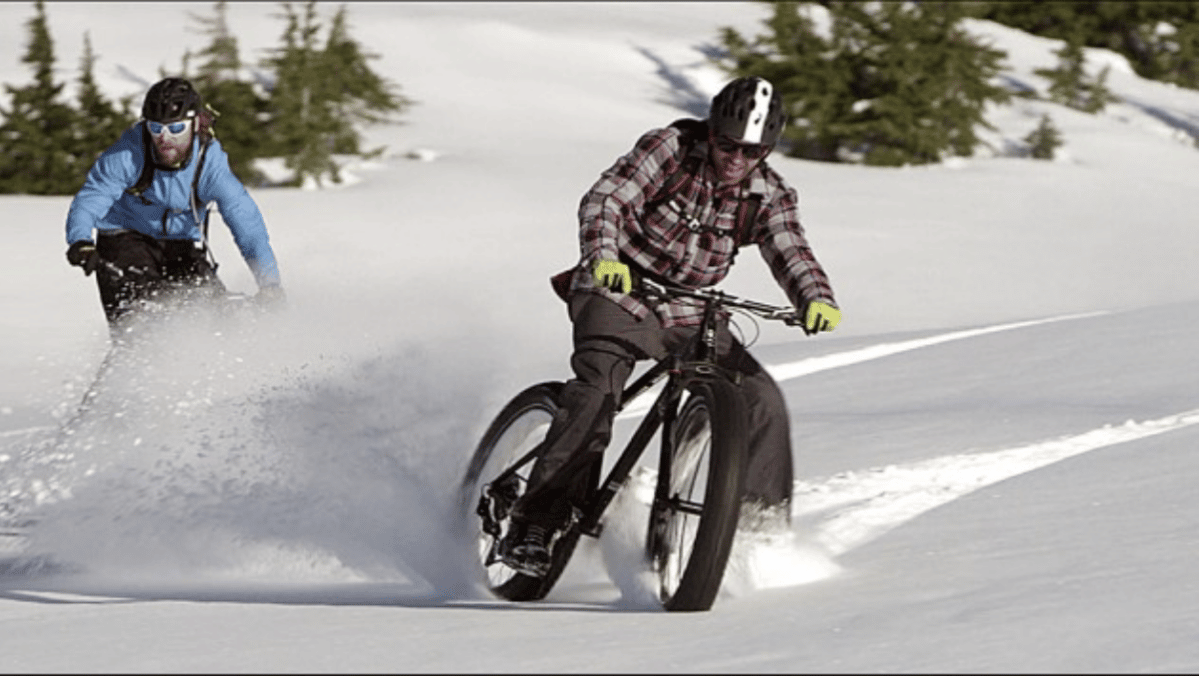
Plus bikes are bikes which lie in the middle of fat bikes and trail-sized tyres and were super popular because they were so comfortable to ride with their 2.8 to 3 inch tyres. Nowadays this style of riding has gone down in popularity because the tyres aren’t able to fit the new regular mountain bikes and their suspension.
If you’re riding downhill then downhill tyres are definitely needed for you to get the bet performance out of your bike on those fast technical trails but when you’re choosing between enduro and cross country tyres then the differences between the two types of tyres are much more subtle.
For people that are new to changing their tyres and knowing which one to pick then a good place to start would be to check the sizing on the original tyres of your bike and then just pick the type of tyre that best matches your riding style. Even if you have a cross country bike you can still put more aggressive enduro tyres on it if you feel like they’d be more helpful to your style and vice versa.
What size tyre do I need?
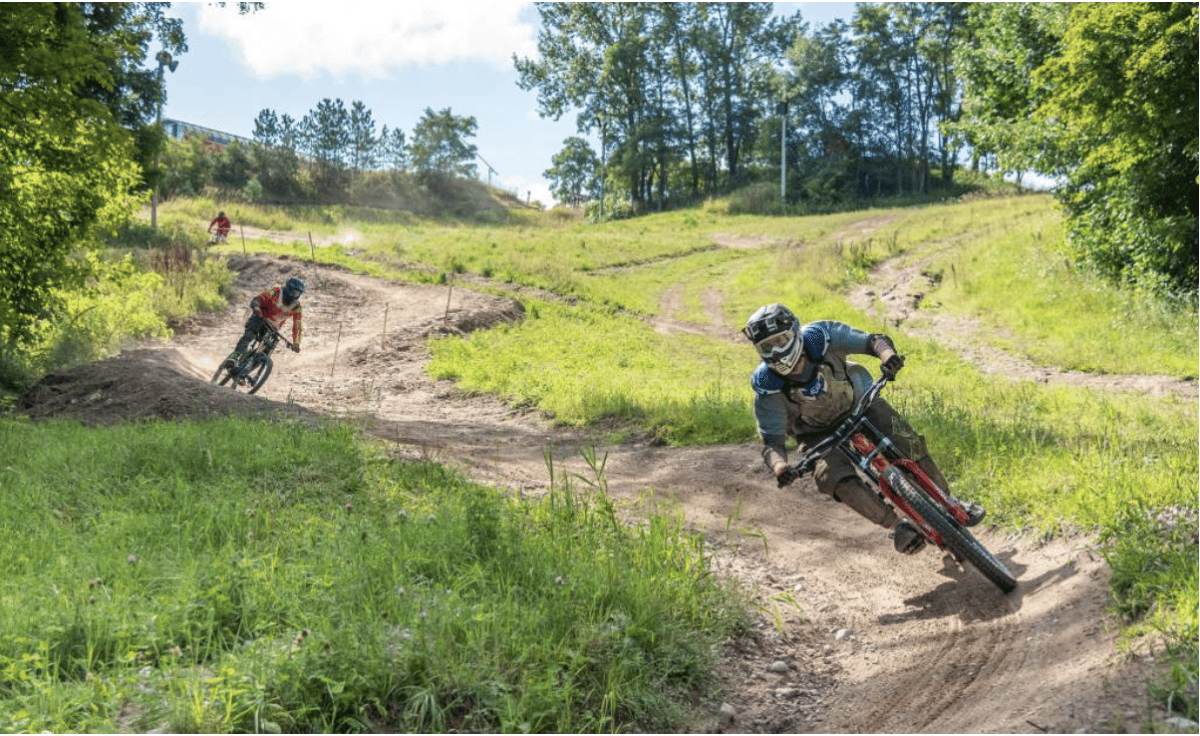
If you’re looking for the current size of your tyres it normally says it on the tyre itself and then it’ll display the wheel diameter first then the tyre width, like 29 x 2.4. The mountain bike tyres come in three different diameter sizes, 26 inches, 27.5 inches and 29 inches, with the exception of childrens bikes which range from 12 to 24 inches instead. The second number, the tyre width, can range anywhere from being as thin as 1.9 inches for super light racing bikes to 5 inches on a fat bike.
The first measurement, the diameter, is based on your wheel size but when it comes to the width of the tyres, those are determined by the free space you have between your suspension or just your personal preference. If you have no idea what this width could be then this is how they generally look:
Cross Country: 1.9”-2.25”
Enduro: 2.25”-2.6”
Downhill: 2.4”-2.5”
Plus: 2.8”-3”
Fat bikes: 3.7”-5”
Tubeless Tyres
Most of the new bikes being sold nowadays are already set up as tubeless or are at the very least tubeless already. As you probably understand from the name, these types of tyres don’t have tubes inside of them and instead use a specific type of tape around the inside of the wheel rim to seal off all of the spoke holes. Once all the holes are covered up you then pour sealant into the inside of the tyre and then you have to pump air into it quickly by using an air compressor or bike pump with a booster chamber so that the tyres are able to sit on the rim of the wheel.

The sealant you pour into the tyres keeps the air sealed inside your tyres and even if you get a small puncture it will seal the whole and fix the puncture without you having to do anything except for maybe pumping it up a little bit to make sure the tyre pressure is just right still. If anything goes wrong with this setup it can be very hard to fix it and will definitely get messy, so if you aren’t pretty good when it comes to fixing these types of problems it may be wisest to stick with regular tyres which are easier to fix if something bigger happens.
So there is the information that you need to choose your first tyres or even if you’re thinking of changing or upgrading the ones you have already. It is most important that you think about exactly what type of riding you will be doing and choose the best tyre based on that.

